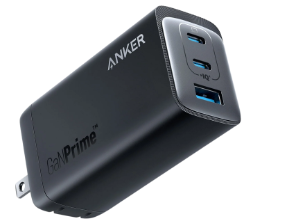
Tips for Capturing High-Quality Video with Recording Cameras
Quality video content has become increasingly essential in both personal and professional settings. Whether you’re documenting life’s special moments, creating content for social media, or recording for business purposes, producing high-quality video can make all the difference. The art of video recording goes beyond just hitting the record button—it involves mastering camera settings, lighting, sound, and composition. With the right techniques and the right equipment, such as the latest recording cameras, anyone can turn an ordinary video into a professional-looking masterpiece. In this guide, we’ll explore practical tips to elevate your video recording game.
Understand and Optimize Camera Settings
Recording high-quality video starts with understanding your camera’s technical settings. Making the right adjustments can transform the visual clarity and overall aesthetics of your footage.
Resolution and Frame Rate
Choosing the correct resolution and frame rate is crucial for delivering clear, sharp video. Most modern cameras such as eufy’s products offer resolutions like 1080p or 4K, with 4K providing higher detail and better results when viewed on larger screens. If you’re shooting cinematic content, a frame rate of 24 frames per second (fps) is ideal, giving your video a filmic, smooth appearance. On the other hand, if you’re capturing fast-moving scenes or sports footage, 60fps or even 120fps can deliver a more fluid and dynamic result.
White Balance and Exposure
Proper white balance ensures that colors in your video appear natural. Different lighting conditions—like sunlight, indoor light, or fluorescent light—can drastically affect the colors captured by your camera. Adjusting the white balance ensures that whites appear as true white, and all other colors remain accurate. Equally important is managing exposure, which affects how light or dark your video appears. Overexposure can wash out details, while underexposure can hide them in shadows. Find a balanced setting to ensure all areas of your video are well-lit and detailed.
Focus on Lighting for Clear and Vibrant Footage
Natural Lighting vs. Artificial Lighting
Whenever possible, use natural lighting, such as sunlight, to achieve soft, flattering results. If shooting outdoors, aim for the golden hour—the first hour after sunrise or the last hour before sunset—when the sunlight is soft and diffused. When natural lighting isn’t available or sufficient, artificial lighting, such as softboxes or ring lights, can help illuminate your subject evenly. Avoid harsh lighting that creates unwanted shadows or backlighting that can leave your subject dark and difficult to see.
Three-Point Lighting Setup
For professional-looking videos, the three-point lighting setup is a popular choice. This technique involves three light sources: the key light, which is the primary source of illumination; the fill light, which softens shadows created by the key light; and the backlight, which helps separate the subject from the background, adding depth to the shot. Using this setup ensures balanced lighting and gives your footage a polished, studio-quality feel.
Ensure Stable Footage with Proper Stabilization Techniques
Nothing distracts viewers more than shaky footage. Smooth, stable video is key to maintaining a professional look and keeping your audience focused. Using a tripod or gimbal can greatly reduce camera shake and ensure smooth panning shots. Tripods are ideal for stationary shots, while gimbals offer stabilization for dynamic, moving scenes. If a tripod or gimbal isn’t available, practice handheld stabilization techniques. Keep your elbows close to your body, and move slowly and steadily to minimize shake. Many modern cameras, including recording cameras with advanced stabilization features, help reduce movement in post-processing.
Capture Clear and Balanced Audio
While video quality is important, audio can make or break the viewer’s experience. Using the built-in microphone on your camera often results in poor sound quality, filled with background noise or distant-sounding dialogue. Invest in an external microphone for better audio capture. For interviews or narration, consider a lapel or shotgun mic, which captures crisp sound close to the source. Monitor your audio levels while recording, and adjust them to avoid distortion. Tools like windshields or noise reduction software can also help eliminate unwanted ambient noise, especially when shooting outdoors.
Composition and Framing: Creating Visually Appealing Shots
Rule of Thirds
The rule of thirds is a fundamental principle in composition that can enhance the visual interest of your shots. Imagine dividing your frame into nine equal parts using two horizontal and two vertical lines. Position your subject along these lines or at their intersections, rather than centering them in the middle of the frame. This off-center framing creates a more dynamic and visually compelling composition, drawing the viewer’s attention naturally.

Depth of Field
Depth of field refers to the distance between the nearest and farthest objects in a scene that appear sharp. Using a shallow depth of field can help focus attention on the subject by blurring the background, creating a cinematic feel. This technique is particularly useful in interviews, product showcases, or any scenario where the subject is the main point of interest. It allows you to isolate the subject and eliminate distractions from the background, ensuring that your audience’s attention remains where you want it.
Conclusion
Capturing high-quality video requires more than just having a good camera. It’s about mastering the settings, lighting, stabilization, audio, and composition to create a visually and audibly appealing result. With practice and attention to detail, you can elevate your video recordings to a professional level. Investing in the right equipment also plays a crucial role in achieving superior video quality. For those looking for an excellent recording camera, the eufyCam Indoor Cam S350 offers a perfect blend of high resolution, dual cameras, and intelligent tracking features that make it ideal for capturing both personal moments and security footage. Whether you’re recording memories or keeping an eye on things, the right tools make all the difference in producing high-quality video content.




